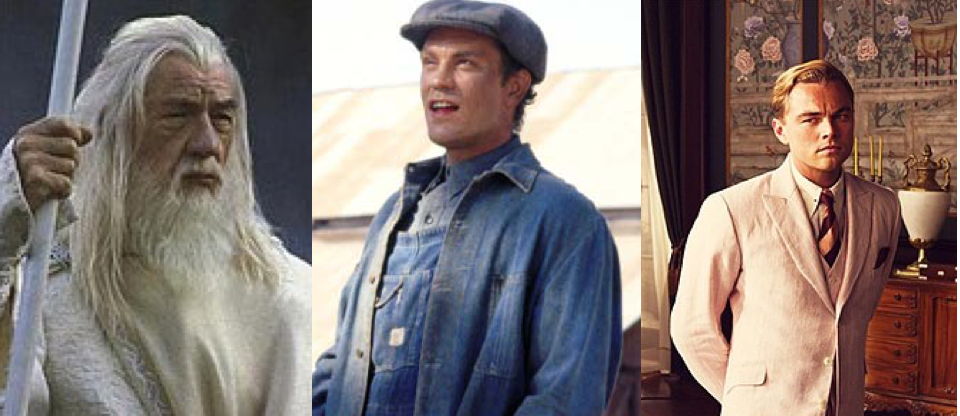By Jose Paz Soldan

The Fool’s Journey is represented by 22 cards in a tarot card deck and is often used in fortunetelling and symbolism in fiction. Each cards is an “arcana,” representing the different stages of life a person goes through. The 13th card is the Death arcana, which represents not an end, but a metamorphosis. It’s a transition from one part of life to another, and is meant to represent a shift of character or perspective much like a caterpillar emerging from its cocoon and becoming a butterfly. By thinking of death in this way — as more of a shift or a transition — when we write fiction fiction, we can use death in a way that leaves a more lasting impact on our readers.
An example of this comes from the two deaths that occur in the novella Of Mice and Men by John Steinbeck. To understand the impact, one needs to understand that Of Mice and Men started off with the two main characters, George and Lennie, trying to find a way to make their dreams of owning their own land come true in the midst of a world ravaged by the Great Depression. Eventually, they manage to find work and begin to save up enough money to buy their own land, but Lennie accidentally kills the wife of another character. With her death, the story takes a dramatic shift in tone. Suddenly, a tale of friendship succeeding in an unforgiving world transforms into a contemporary tragedy.
In order to spare his friend the wrath of an angry mob, George decides to execute Lennie in the book’s climax.
The book ends with George numb with the grief of his actions and his dreams completely shattered. With the death of these two characters, Of Mice and Men finishes its shift into a contemporary tragedy and is able to convey to its readers the injustice and hopelessness that happens in the world. By using death as a device in order to turn the page in a new direction, Steinback manages to take his audience by surprise and grant them a unique experience that manages to feel Next even today. With the deaths of Lennie, the story becomes one of pain and tragedy, effectively managing to relate and pull at the hearts of those living during the Great Depression.
The next example is from The Great Gatsby, written by F. Scott Fitzgerald. The novel follows Nick Carraway and his relationship with Jay Gatsby, a wealthy man that throws lavish parties in an attempt to attract the attention of his love, a woman named Daisy. The book describes Gatsby’s humble beginnings as a poor farmer boy and later success as a businessman, showing the lengths he has gone to find his happiness. Near the end of the novel, Gatsby is then fatally shot for a hit-and-run he didn’t commit.
Despite Nick’s attempts to spread the word of Gatsby’s death to everyone who attended his large, lavish parties, his funeral remains empty. The death of Gatsby marks the final turning point of his character arc and shows the reader how hollow and empty his life was.
It’s through Gatsby’s death that his arc is finally realized and the novel reveals its tragic nature. It’s the point where everything shifts, reversing Gatsby’s entire character as the novel reveals how lonely and abandoned he was. Through death, his entire character undergoes a complete transformation from a rich playboy to a heartbroken and lonely farm boy. This distinct metamorphosis that could only be accomplished with killing off the character is what drove home the ending and themes of The Great Gatsby. With this masterful use of death, F. Scott Fitzgerald created a truly marvelous character.
The final death is from The Fellowship of the Ring, by J. R. R. Tolkien. But unlike the other two examples, the death of Gandalf is more of a literal metamorphosis, just like the Fool’s Journey. In order to save his friends from certain death, Gandalf sacrifices himself in order to defeat a monstrous being.
However, in the following book, The Two Towers, Gandalf returns from the dead as Gandalf the White, gaining a rise in power and authority as a wizard.
What makes Gandalf’s death unique is that it’s not simply a revelation or a turning point in his character, it’s a trial that he overcomes. His character is tested through adversity and through death, he is able to become a more powerful character as a result. The dramatic reveal of his death and rebirth has granted Gandalf a spot amongst famed characters in fantasy, making him truly stand out due to his journey through death.
Understanding the value of death and thinking of it as a transformation for a story or for a character rather than an end is a useful perspective. With the mindset of death as a transformative tool, it makes it easier to write it into narratives. An author doesn’t have to end a character’s story with death, they can start or even change a character by having them die instead. Entire stories have their tone and themes change completely with death being present in the narrative. While it’s true that no one should be making an entire cast of “X the White,” or killing off all of their characters without thinking about what it means for the story, playing around with death is a great way to experiment when writing fiction. It’s one of the ways that authors are able to write unique and wonderful stories for their readers.
Jose Paz Soldan is the Long River Review scholarship contest coordinator and a fiction panel reader. He can be reached at jose.paz_soldan@uconn.edu.


You must be logged in to post a comment.